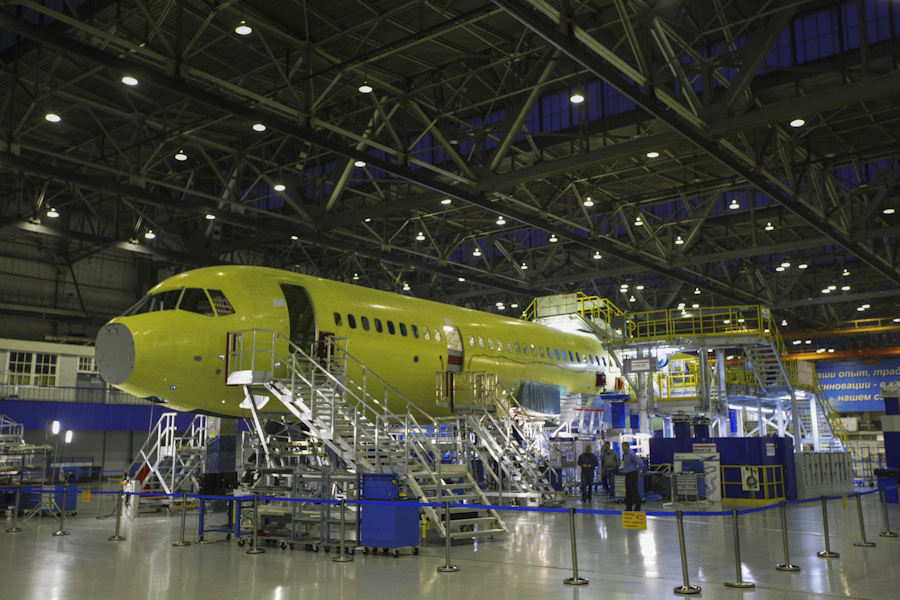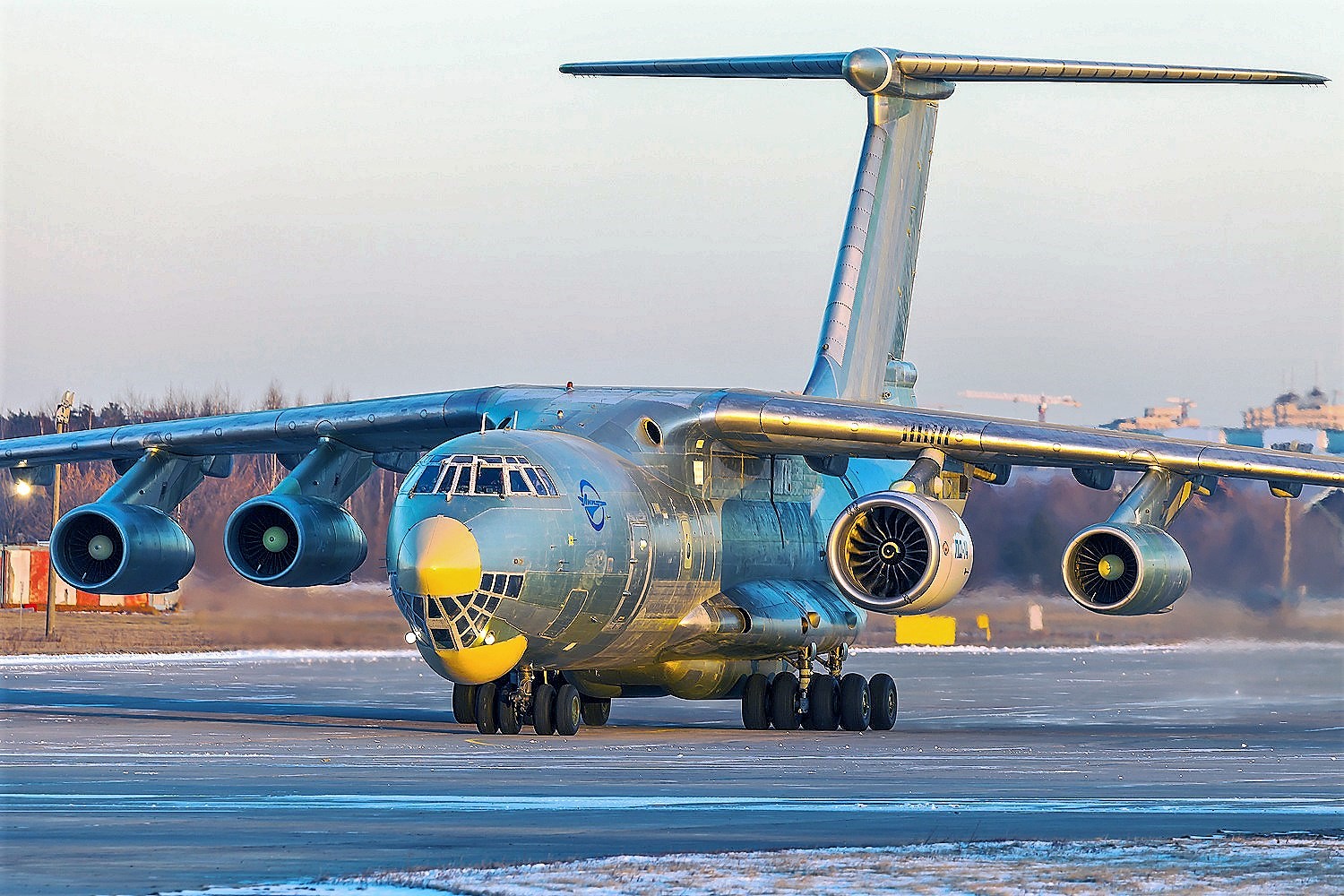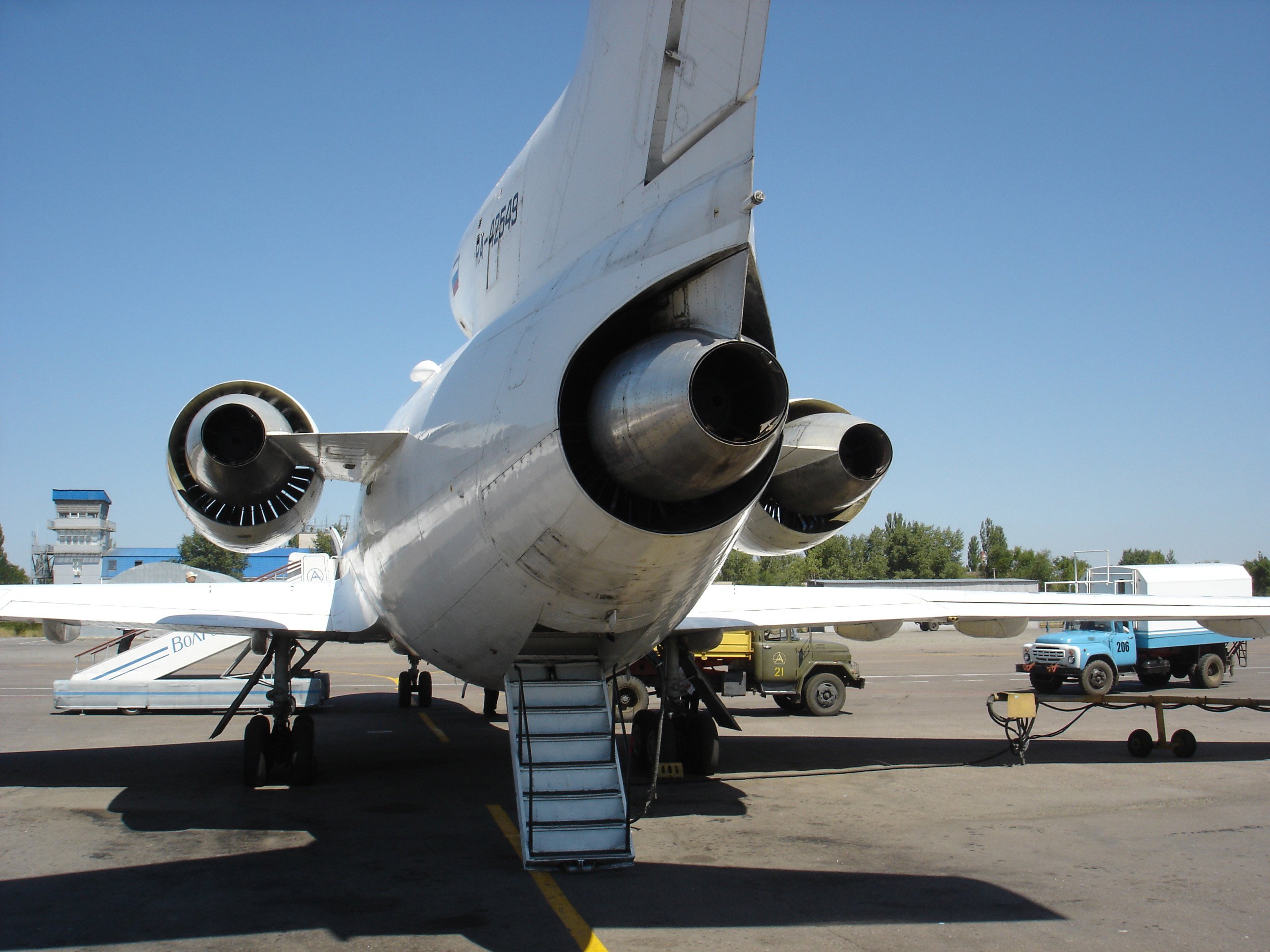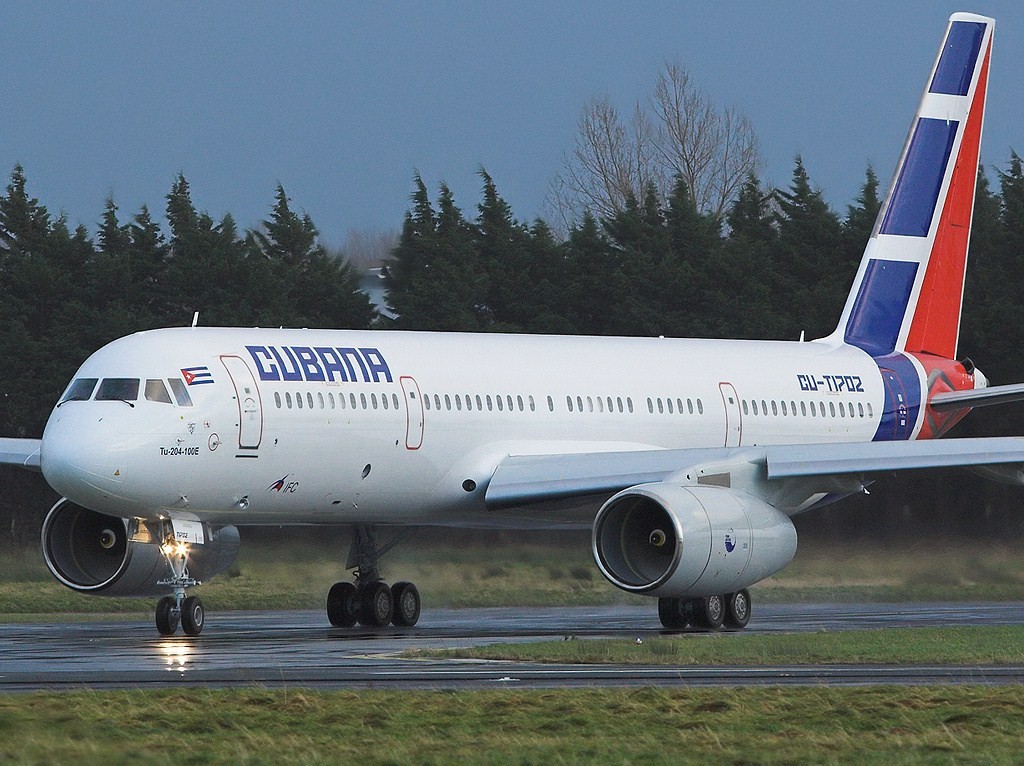|
MS-21
The Irkut MC-21 (russian: Иркут МС-21) is a single-aisle airliner, developed in Russia by the Yakovlev Design Bureau and produced by its parent Irkut, a branch of the United Aircraft Corporation (UAC), itself a 92%-owned subsidiary of Russia's state-owned aviation giant Rostec. The program was launched in 2007. Irkut rolled out the first MC-21-300 on 8 June 2016 and first flew the aircraft on 28 May 2017. The twinjet has a carbon fibre reinforced polymer wing and is powered by Aviadvigatel PD-14 turbofans or Pratt & Whitney PW1000G engines. The standard MC-21-300 has a capacity of 132–163 passengers in a two-class configuration and 165–211 in a single class, and a range up to . It will be followed by a shortened MC-21-200 version. By July 2018, it had received 175 firm orders. In early 2022, international sanctions against Russia were imposed due to the Russian invasion of Ukraine. Irkut Corporation was placed on the sanctions lists of the United States ... [...More Info...] [...Related Items...] OR: [Wikipedia] [Google] [Baidu] |
Aviadvigatel PD-14
The Aviadvigatel PD-14 (previously known as PS-12) is a high-bypass turbofan being developed by Aviadvigatel to power the Irkut MC-21 twin-jet airliner. It is a 14 tf (30,865 lbf) thrust powerplant. Development In December 2009, the PD-14 was developed to be 15% more efficient than its PS-90A2 predecessor to be installed on the MS-21 and the Ilyushin Il-276. The PD-14 was announced in early 2010 with its development cost estimated at RUB 35 billion (US$1.1 billion). In April 2010, Aviadvigatel was expecting to start its certification procedure in 2012. Its core was first tested on 26 November 2010. It was displayed for the first time at the 2013 MAKS air show. Flight tests began in 2015 on an Ilyushin Il-76. Between December 2016 and May 2017, the PD-14 operational performance and working efficiency at all altitudes and speeds were assessed on the Il-76 testbed aircraft at Gromov Flight Research Institute near Moscow. After two years exploring performance at most altitude ... [...More Info...] [...Related Items...] OR: [Wikipedia] [Google] [Baidu] |
Pratt & Whitney PW1000G
The Pratt & Whitney PW1000G, also called the Geared Turbofan (GTF), is a high-bypass geared turbofan engine family produced by Pratt & Whitney. After many demonstrators, the program was launched with the Mitsubishi MRJ's PW1200G in March 2008, and it was first flight tested in July 2008. The first variant to be certified was the PW1500G for the Airbus A220 in February 2013. The program cost is estimated at $10 billion. The gearbox between the fan and the low-pressure spool allows each to spin at its optimal speed, allowing a higher bypass ratio for a better propulsive efficiency. Pratt & Whitney claims the engine is 16% more fuel efficient than the previous generation, and up to 75% quieter. The first variant to enter service was the PW1100G for the A320neo in January 2016. The engine had teething problems after its introduction, extending to grounded aircraft and inflight failures, solved afterwards. The variants can generate 15,000 to 33,000 lbf (67 to 147 kN) of thrust. Bes ... [...More Info...] [...Related Items...] OR: [Wikipedia] [Google] [Baidu] |
Mitsubishi Ki-21
The (Allied reporting name: "Sally" /"Gwen") was a Japanese heavy bomber during World War II. It began operations during the Second Sino-Japanese War participating in the Nomonhan Incident, and in the first stages of the Pacific War, including the Malayan, Burmese, Dutch East Indies and New Guinea Campaigns. It was also used to attack targets as far-flung as western China, India and northern Australia. Design and development In 1936, the Imperial Japanese Army Air Service issued a requirement for a new heavy bomber to replace both the Ki-20 (Army Type 92 Heavy Bomber) and the Ki-1 (Army Type 93 Heavy Bomber). The design called for a crew of at least four, top speed of , endurance of at least five hours, and a bombload of . The design parameters were very ambitious, and few twin-engine bombers anywhere in the world could exceed such performance at that time. Both Mitsubishi and Nakajima were asked to build two prototypes each, a further proposal from Kawasaki being rejecte ... [...More Info...] [...Related Items...] OR: [Wikipedia] [Google] [Baidu] |
TsAGI
The Central Aerohydrodynamic Institute (also (Zhukovsky) Central Institute of Aerodynamics, russian: Центра́льный аэрогидродинами́ческий институ́т, ЦАГИ, Tsentral'nyy Aerogidrodinamicheskiy Institut, TsAGI) was founded in Moscow by Russian aviation pioneer Nikolai Yegorovich Zhukovsky on December 1, 1918. History From 1925 and up to the 1930s, TsAGI developed and hosted Tupolev's AGOS (''Aviatziya, Gidroaviatziya i Opytnoye Stroitelstvo'', the "Aviation, Hydroaviation, and Experimental Construction"), the first aircraft design bureau in Soviet Union, and at the time the main one. In 1930, two other major aircraft design bureaus in the country were the Ilyushin's TsKB (''Tsentralnoye Konstruksionnoye Byuro'' means "Central Design Bureau") and an independent, short-lived Kalinin's team in Kharkiv. In 1935 TsAGI was partly relocated to the former dacha settlement ''Otdykh'' (literally, "Relaxation") converted to the new urban-type set ... [...More Info...] [...Related Items...] OR: [Wikipedia] [Google] [Baidu] |
Yak-42
The Yakovlev Yak-42 (russian: Яковлев Як-42; NATO reporting name: "Clobber") is a 100/120-seat three-engined mid-range passenger jet developed in the mid 1970s to replace the technically obsolete Tupolev Tu-134. It was the first airliner produced in the Soviet Union to be powered by modern high-bypass turbofan engines.Gunston, 1997 Development In 1972, the Yakovlev design bureau started work on a short- to medium-range airliner capable of carrying 100–120 passengers. It was intended to be a replacement for the Tupolev Tu-134 jet as well as the Ilyushin Il-18, Antonov An-24 and An-26 turboprop airliners. While the new airliner was required to operate out of relatively small airfields while maintaining good economy, as many Soviet airports had been upgraded to accommodate more advanced aircraft, it did not have to have the same ability to operate from grass strips as Yakovlev's smaller Yak-40. The requirement resulted in the largest, heaviest and most powerful airc ... [...More Info...] [...Related Items...] OR: [Wikipedia] [Google] [Baidu] |
Tu-204
The Tupolev Tu-204 (russian: Туполев Ту-204) is a twin-engined medium- range narrow-body jet airliner capable of carrying 210 passengers, designed by Tupolev and produced by Aviastar-SP and Kazan Aircraft Production Association. First introduced in 1989, it was intended to be broadly equivalent to the Boeing 757, with slightly lower range and payload, and had competitive performance and fuel efficiency in its class. It was developed for Aeroflot as a replacement for the medium-range Tupolev Tu-154 trijet. The latest version, with significant upgrades and improvements, is the Tu-204SM, which made its maiden flight on 29 December 2010. In April 2022, United Aircraft Corporation (UAC) announced plans to assemble 70 Tu-214s by 2030 Design and development The Tu-204 was designed as a family of aircraft incorporating passenger, cargo, combi and quick-change variants. It is powered by either two Aviadvigatel PS-90 or Rolls-Royce RB211 engines. The Tu-204 is produced at two ... [...More Info...] [...Related Items...] OR: [Wikipedia] [Google] [Baidu] |
Tu-154
The Tupolev Tu-154 (russian: Tyполев Ту-154; NATO reporting name: "Careless") is a three-engined, medium-range, narrow-body airliner designed in the mid-1960s and manufactured by Tupolev. A workhorse of Soviet and (subsequently) Russian airlines for several decades, it carried half of all passengers flown by Aeroflot and its subsidiaries (137.5 million/year or 243.8 billion passenger-km in 1990), remaining the standard domestic-route airliner of Russia and former Soviet states until the mid-2000s. It was exported to 17 non-Russian airlines and used as a head-of-state transport by the air forces of several countries. The aircraft has a cruising speed of and a range of . Capable of operating from unpaved and gravel airfields with only basic facilities, it was widely used in the extreme Arctic conditions of Russia's northern/eastern regions, where other airliners were unable to operate. Originally designed for a 45,000-hour service life (18,000 cycles), but capable of 80,0 ... [...More Info...] [...Related Items...] OR: [Wikipedia] [Google] [Baidu] |
Tu-134
The Tupolev Tu-134 (NATO reporting name: Crusty) is a twin-engined, narrow-body jet airliner built in the Soviet Union for short and medium-haul routes from 1966 to 1989. The original version featured a glazed-nose design and, like certain other Russian airliners (including its sister model the Tu-154), it can operate from unpaved airfields. One of the most widely used aircraft in former Comecon countries, the number in active service is decreasing because of operational safety concerns and noise restrictions. The model has seen long-term service with some 42 countries, with some European airlines having scheduled as many as 12 daily takeoffs and landings per plane. In addition to regular passenger service, it has also been used in various air force, army and navy support roles; for pilot and navigator training; and for aviation research and test projects. In recent years, a number of Tu-134s have been converted for use as VIP transports and business jets. A total of 854 Tu-1 ... [...More Info...] [...Related Items...] OR: [Wikipedia] [Google] [Baidu] |
Boeing 737 MAX
The Boeing 737 MAX is the fourth generation of the Boeing 737, a narrow-body aircraft, narrow-body airliner manufactured by Boeing Commercial Airplanes (BCA), a division of American company Boeing. It succeeds the Boeing 737 Next Generation (NG) and competes with the Airbus A320neo family. The new series was announced on August 30, 2011. It took its maiden flight on January 29, 2016 and was certified by the United States Federal Aviation Administration (FAA) in March 2017. The first delivery was a MAX 8 in May 2017 to Malindo Air, with which it commenced service on May 22, 2017. The 737 MAX is based on earlier 737 designs, with more efficient CFM International LEAP-1B engines, aerodynamic changes, including distinctive split-tip winglets, and airframe modifications. The 737 MAX series has been offered in four variants, offering 138 to 204 seats in typical two-class configuration, and a range of . The 737 MAX 7, MAX 8 (including the 200–seat MAX 200), and MAX& ... [...More Info...] [...Related Items...] OR: [Wikipedia] [Google] [Baidu] |
Airbus A320neo
The Airbus A320neo family is a development of the A320 family of narrow-body airliners produced by Airbus. The A320neo family (''neo'' for "new engine option") is based on the previous A319, A320 and A321 ( enhanced variant), which was then renamed A320ceo, for "current engine option". Re-engined with CFM LEAP-1A or Pratt & Whitney PW1000G engines and fitted with sharklets as standard, it is 15% to 20% more fuel efficient than the A320ceo (Enhanced) family. It was launched on 1 December 2010, made its first flight on 25 September 2014 and was introduced by Lufthansa on 25 January 2016. By 2019, the A320neo had a 60% market share against the competing Boeing 737 MAX. , a total of 8,502 A320neo family aircraft had been ordered by more than 130 customers, of which 2,341 aircraft had been delivered. The global A320neo fleet had completed more than 5.51 million flights over 11 million block hours without accidents. Development In 2006 Airbus started the A320 Enhanced (A320E) ... [...More Info...] [...Related Items...] OR: [Wikipedia] [Google] [Baidu] |









